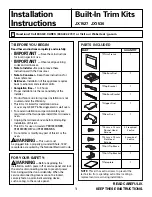
4.4
Alignment
Align the sensor with the object. Select the position so that the red emitted light beam
hits the center of the object. You must ensure that the optical opening (front screen) of
the sensor is completely clear [D]. We recommend making the adjustments using an
object with a low remission.
Figure: D
5
Configuration
5.1
Adjustment
Perform configuration:
a) Setting the analog output
The analog output is configured as follows at the factory:
4 mA = 100 mm
20 mA = maximum sensing range (depending on type)
The setting can be adapted to the application using the teach-inbutton Q
A
(see Graph‐
ics E and G). Do not operate the teach-in buttonusing sharp objects. The teach
sequence and object distance definethe characteristic curve of the analog output. Keep
the object in thebeam path. Press and hold the teach-in button Q
A
for > 1 s until theleft-
hand yellow LED starts to flash, then release the button. The LEDwill continue to flash.
The current distance to the object is assignedto the 4 mA (0.05 V) value. Then move
the object. Press the teach-inbutton Q
A
again for > 1 s until the left-hand yellow LED
stops flashing.The distance to the object is measured and assigned to the 20 mA (10V)
value. A rising or falling edge is produced depending on whether theobject is moved
from distant to close or the other way round.
The analog output can be switched between current and voltage output(see Graphic J).
To do this, press and hold the teach-in button Q
A
for >10 s until the left-hand yellow
LED and the green LED flash alternately.Then release the button. The green LED will
continue to flash. Theleft-hand yellow LED will light up depending on whether the sen‐
sor isin current or voltage mode. To switch between the modes, press theteach-in but‐
ton Q
A
briefly. If no button is pressed for > 10 s, the sensorwill save the current mode
and exit the setting menu.
b) Setting the sensing range
The sensing range is set by pressing the teach-in button Q for > 1 s (seeGraphic F). Do
not operate the teach-in button using sharp objects.We recommend placing the object
within the sensing range. Once thesensing range has been adjusted, the object is
removed from the pathof the beam, which causes the background to be suppressed
and theswitching output to change (see Graphic C).
c) Setting via SOPAS and transferring the settings with the SICK MemoryStick
4
COMMISSIONING
8
8020879.ZM26 | SICK
Subject to change without notice










































